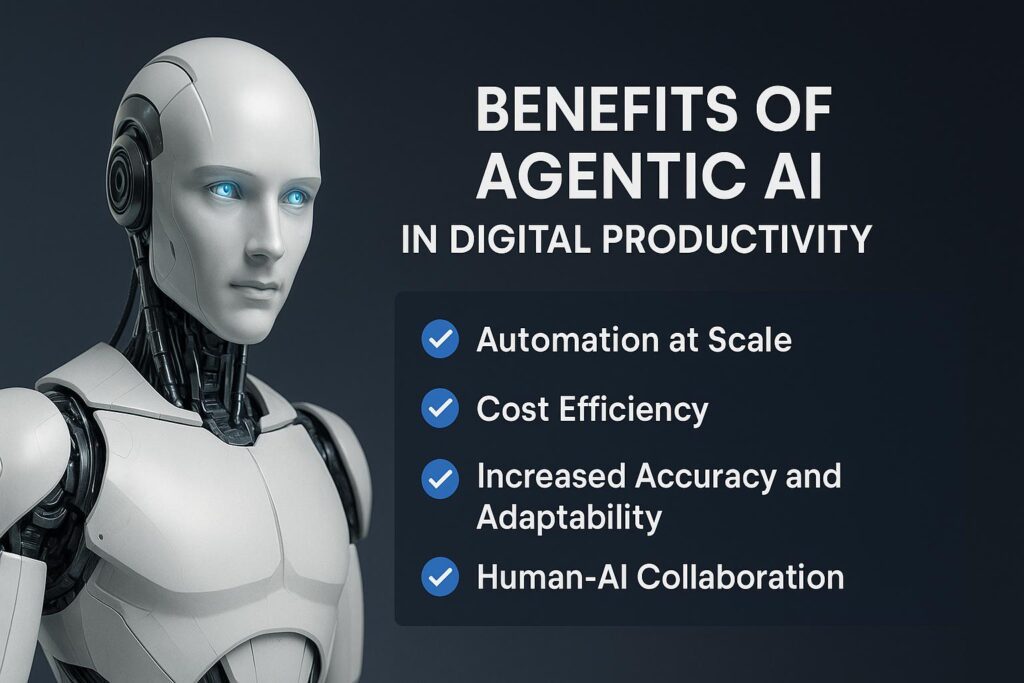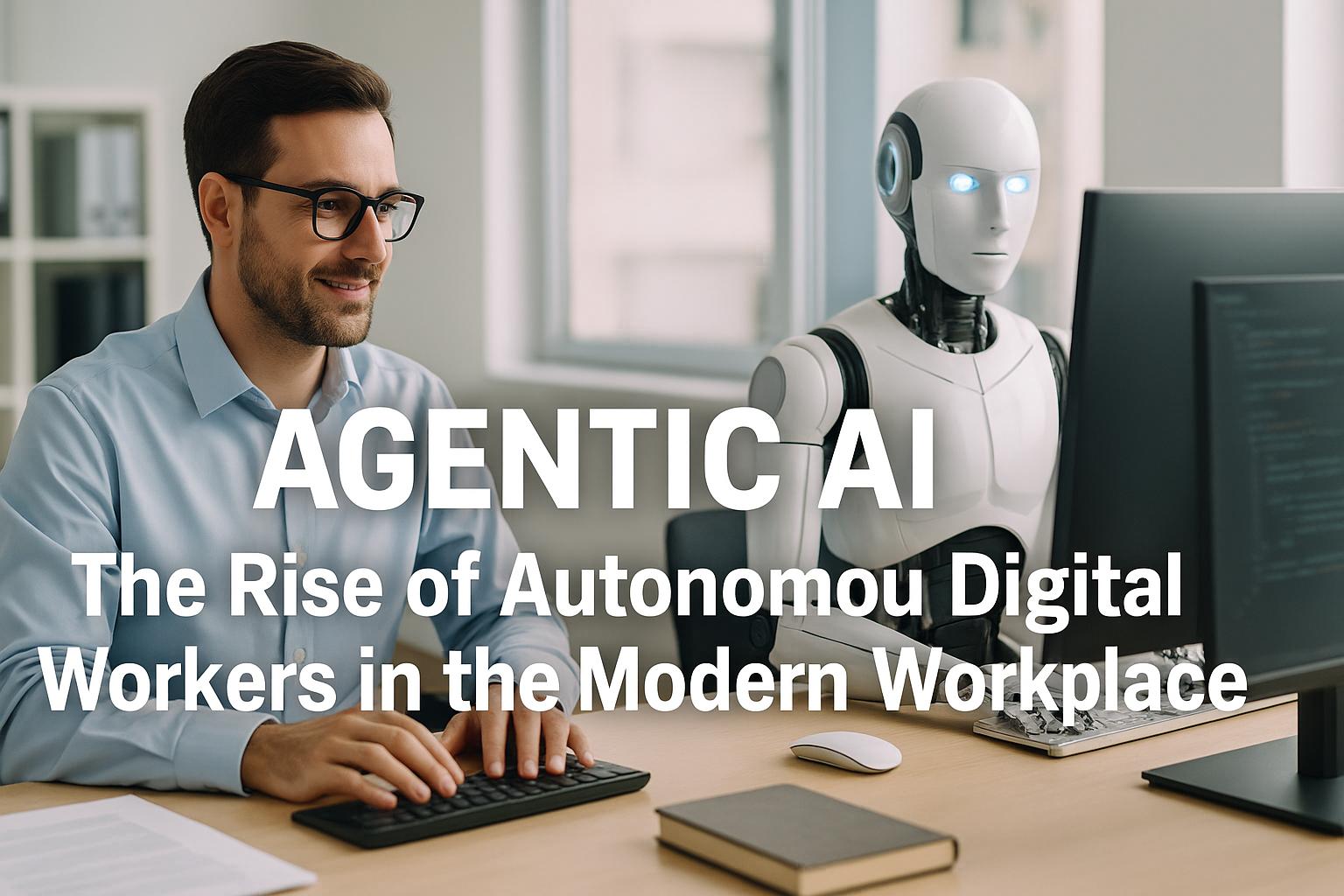Welcome to the new frontier of digital productivity—where artificial intelligence isn’t just assisting, but autonomously executing tasks. Meet Agentic AI, the future of work in motion.
What Is Agentic AI?
Agentic AI refers to AI systems capable of acting autonomously—making decisions, initiating actions, and adapting to goals—without constant human oversight. Unlike traditional rule-based systems or reactive chatbots, agentic AIs can:
- Set and pursue objectives
- Break tasks into subgoals
- Coordinate across tools, APIs, and data sources
- Learn from feedback and adapt behavior over time
In short, these are not just “smart assistants,” they’re becoming digital workers.
Why Is Agentic AI Trending Now?
Agentic AI has been a hot search term on Google Trends in the U.S. over the last 30 days. Here’s why it’s grabbing attention:
- Explosion of AI Startups: New tools like Auto-GPT, HyperWrite, and Devika AI are showcasing agent-like behavior.
- Enterprise Adoption: Companies like UBS and others are deploying these agents in production workflows.
- Productivity Gains: Agentic AI has shown potential to increase productivity by up to 40% in sectors like IT, marketing, and customer service.
- Workforce Disruption: As these agents mature, they are expected to replace or augment a significant portion of junior-level roles.
How Agentic AI Works
Agentic AI draws on various elements to carry out tasks without human input:
- LLMs (Large Language Models): These models provide reasoning and language skills. Examples: GPT-4o, Claude, Gemini.
- Memory Systems: Store past actions, preferences, and long-term goals.
- Planners: Translate complex objectives into step-by-step actions.
- Tool Use: Connect with external software, APIs, or browsers to take action.
- Feedback Loops: Use outcomes to adjust future behavior or retry tasks.
Real-World Example
Imagine an Agentic AI for HR:
- Reads job descriptions and writes tailored listings
- Posts them across job platforms
- Shortlists candidates using resume analysis
- Schedules interviews autonomously
No human intervention needed unless there’s an exception.
Benefits of Agentic AI in Digital Productivity

1. Automation at Scale
Agentic AI handles complex workflows like:
- Automated content generation
- Market research and competitor analysis
- Code debugging and patching
- Customer query resolution
2. Cost Efficiency
Digital agents operate 24/7 without breaks, significantly reducing the cost of labor for repetitive or analytical tasks.
3. Increased Accuracy and Adaptability
Agents improve over time via reinforcement learning and feedback, minimizing errors compared to manual workflows.
4. Human-AI Collaboration
Rather than replacing humans entirely, agentic AI is enhancing the productivity of individuals by handling tedious tasks.
Challenges and Concerns
1. Ethical Implications
- Job displacement, especially for entry-level roles
- Bias and fairness in autonomous decisions
- Opaque decision-making (black box behavior)
2. Technical Limitations
- Still struggle with multi-step planning
- May hallucinate or misinterpret ambiguous prompts
- Require fine-tuning to align with company policies
3. Security Risks
Autonomous agents with API access must be closely monitored to avoid accidental misuse, data leaks, or security breaches.
Industries Leading the Adoption
- Tech & SaaS: GitHub Copilot and Replit AI for developers
- Finance: JPMorgan and UBS exploring AI trading assistants
- Marketing: Jasper AI and Writesonic for content generation
- Healthcare: Clinical trial management and patient follow-up agents
Notable Tools Powering the Agentic AI Movement
Predictions: The Future of Agentic AI
Experts predict a world where every knowledge worker may have a personal AI agent that:
- Understands work patterns
- Manages digital clutter
- Summarizes meetings and emails
- Writes reports and executes tasks
We’re likely heading toward a hybrid model of work, where humans set goals and AI agents deliver results.
How to Prepare for the Agentic AI Revolution
1. Upskill for Human-AI Collaboration
Embrace collaboration with AI agents instead of seeing them as a threat. Skills in prompt engineering, automation, and AI ethics are becoming essential.
2. Experiment with Open-Source Tools
Try tools like Auto-GPT or Reworkd to build your own workflows and agents.
3. Stay Informed
Follow updates from platforms like ByteToLife.com to stay ahead of digital productivity trends.
How to Protect Yourself from Over-Reliance
- Always review critical outputs from agents
- Set permission boundaries on APIs or access
- Use monitoring dashboards for AI behavior
- Train your team to manage AI-agent risk
Conclusion
Agentic AI is not science fiction. It’s real, it’s here, and it’s transforming how we work—one autonomous digital worker at a time. Whether you’re a freelancer, startup founder, or corporate executive, understanding and adapting to this shift is essential for thriving in the new era of digital productivity.
Want to go deeper into AI and productivity? Explore our related posts:



